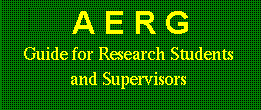 Tell the audience what
your talk is about and where you aim to take them.
Tell the audience what
your talk is about and where you aim to take them.
 Introduce the subject
by posing the problem you are to address in the context of what is already
known.
Introduce the subject
by posing the problem you are to address in the context of what is already
known.
 Describe your approach
and methods minimally -- if you can assume knowledge of the audience, assume
it to be already given. This section may be longer if you are presenting a
research proposal.
Describe your approach
and methods minimally -- if you can assume knowledge of the audience, assume
it to be already given. This section may be longer if you are presenting a
research proposal.
 Present the results,
focussing on no more than three key ideas. Bring each idea to closure. This
section may be shorter if you are presenting a research proposal.
Present the results,
focussing on no more than three key ideas. Bring each idea to closure. This
section may be shorter if you are presenting a research proposal.
 Discuss the
implications of the results for management or the discipline of study.
Discuss the
implications of the results for management or the discipline of study.
Some good advice: A noted speaker was asked his secret of success.
"First," he said, "you write an exciting opening that will draw the attention
of everyone in the room. Then you compose a dramatic summary and closing words
that will leave the audience spellbound. Then," he advised, "you put them as
close together as possible."
Criteria for success
A talk will be considered successful if
 the talk does not
exceed the allotted time of twelve minutes.
the talk does not
exceed the allotted time of twelve minutes.
 the subject is well
introduced with the scope set and the objectives clearly stated.
the subject is well
introduced with the scope set and the objectives clearly stated.
 the talk is focussed on
no more than three major points with supporting data and argument.
the talk is focussed on
no more than three major points with supporting data and argument.
 there is minimal
information provided on materials and methods, unless the talk is
methodological or a research proposal.
there is minimal
information provided on materials and methods, unless the talk is
methodological or a research proposal.
 the implications for
the discipline of study or in application are clearly stated.
the implications for
the discipline of study or in application are clearly stated.
 the talk, and each of
the sentinent ideas, are brought successfully to closure -- the audience is
not left hanging or thinking "so what"?
the talk, and each of
the sentinent ideas, are brought successfully to closure -- the audience is
not left hanging or thinking "so what"?
 textual
overheads/slides do not exceed 12 in number.
textual
overheads/slides do not exceed 12 in number.
 overheads/slides are
clearly legible from the rear of the room by the most myopic, and are free
of unnecessary detail or excessive content.
overheads/slides are
clearly legible from the rear of the room by the most myopic, and are free
of unnecessary detail or excessive content.
 the talk is presented
in a clear voice, audible from the back of the room and relatively free
from, uh, vocal faults.
the talk is presented
in a clear voice, audible from the back of the room and relatively free
from, uh, vocal faults.
 the speaker is clearly
enthused by his or her topic.
the speaker is clearly
enthused by his or her topic.
 questions are addressed
without evasion and answers demonstrate deep understanding of the research
topic and key issues that relate to it.
questions are addressed
without evasion and answers demonstrate deep understanding of the research
topic and key issues that relate to it.
Errors of logic, though devastating in extreme cases, are not to be
considered faults of the presentation. Constructive criticism during or
following a talk is to be welcomed. Indeed it should be actively encouraged by
exposing the weak points of your research to criticism and suggestion.
23-JAN-95
ENDE
 Delivering the
Delivering the Delivering the
Delivering the